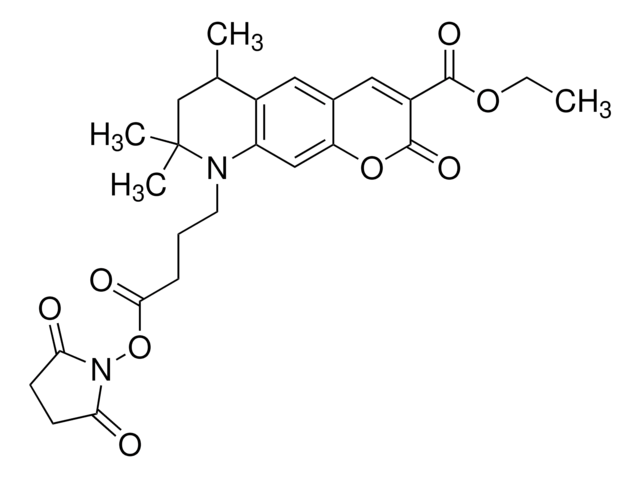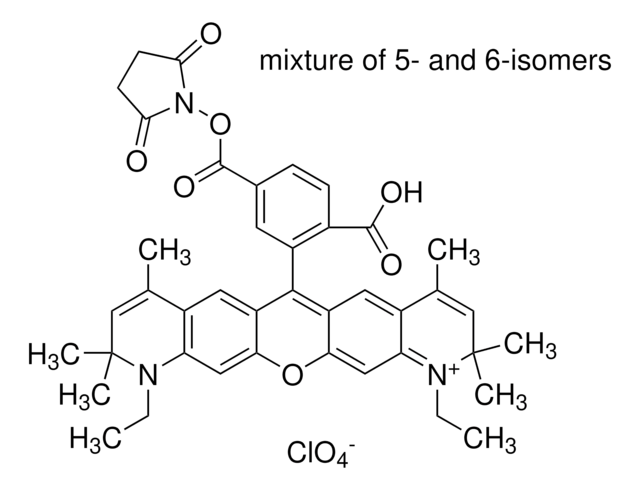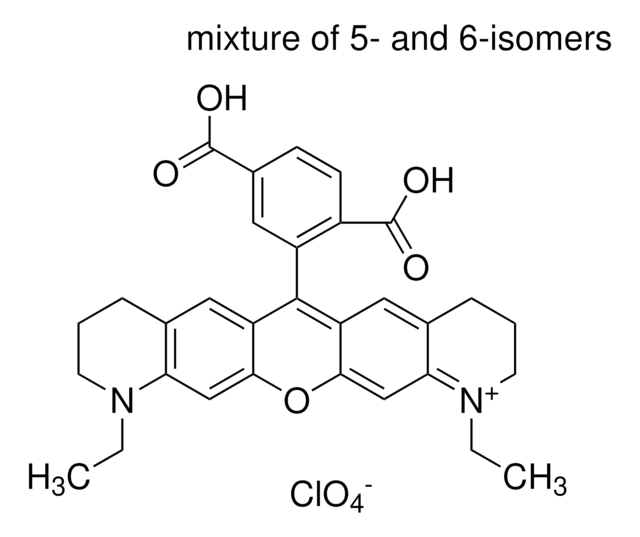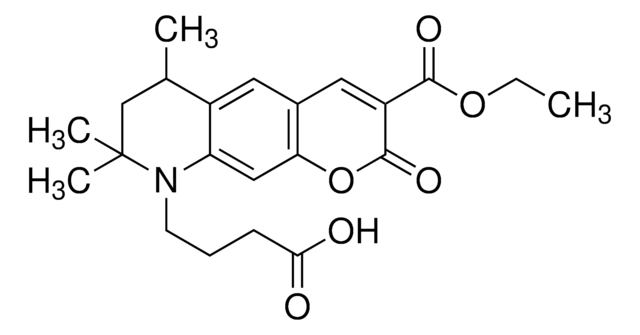72464
Atto 565 NHS ester
BioReagent, suitable for fluorescence, ≥90% (HPLC)
About This Item
Prodotti consigliati
Nome Commerciale
BioReagent
Livello qualitativo
Saggio
≥90% (HPLC)
≥90% (degree of coupling)
Forma fisica
powder
Produttore/marchio commerciale
ATTO-TEC GmbH
Compatibilità
suitable for fluorescence
Metodo di rivelazione
fluorometric
Temperatura di conservazione
−20°C
Cerchi prodotti simili? Visita Guida al confronto tra prodotti
Descrizione generale
Caratteristiche e vantaggi
- Strong absorption
- High fluorescence quantum yield
- High thermal and photo-stability
Altre note
Note legali
Non trovi il prodotto giusto?
Prova il nostro Motore di ricerca dei prodotti.
Codice della classe di stoccaggio
11 - Combustible Solids
Classe di pericolosità dell'acqua (WGK)
WGK 3
Punto d’infiammabilità (°F)
Not applicable
Punto d’infiammabilità (°C)
Not applicable
Dispositivi di protezione individuale
Eyeshields, Gloves, type N95 (US)
Certificati d'analisi (COA)
Cerca il Certificati d'analisi (COA) digitando il numero di lotto/batch corrispondente. I numeri di lotto o di batch sono stampati sull'etichetta dei prodotti dopo la parola ‘Lotto’ o ‘Batch’.
Possiedi già questo prodotto?
I documenti relativi ai prodotti acquistati recentemente sono disponibili nell’Archivio dei documenti.
I clienti hanno visto anche
Articoli
Fluorescent Labeling of Peptides
Il team dei nostri ricercatori vanta grande esperienza in tutte le aree della ricerca quali Life Science, scienza dei materiali, sintesi chimica, cromatografia, discipline analitiche, ecc..
Contatta l'Assistenza Tecnica.



